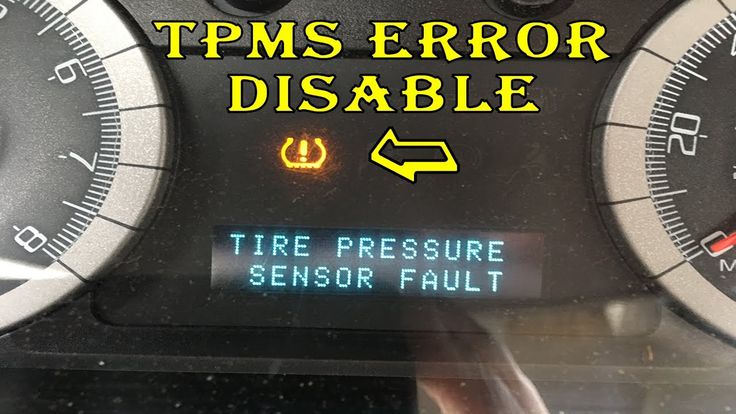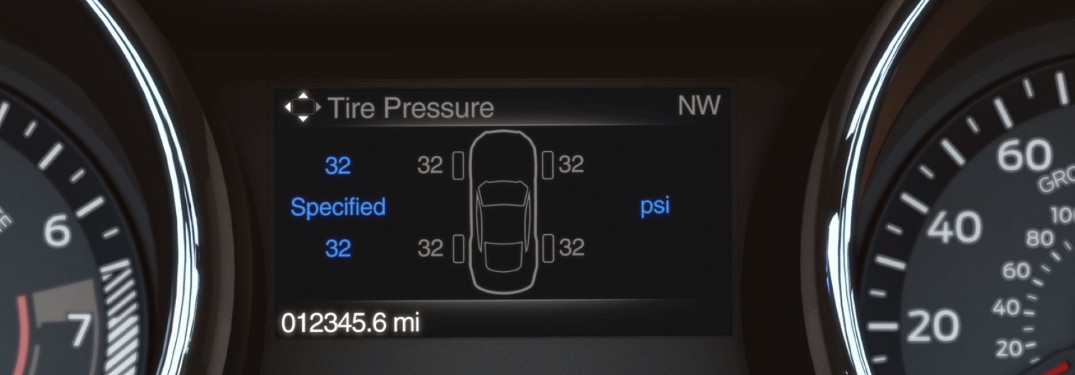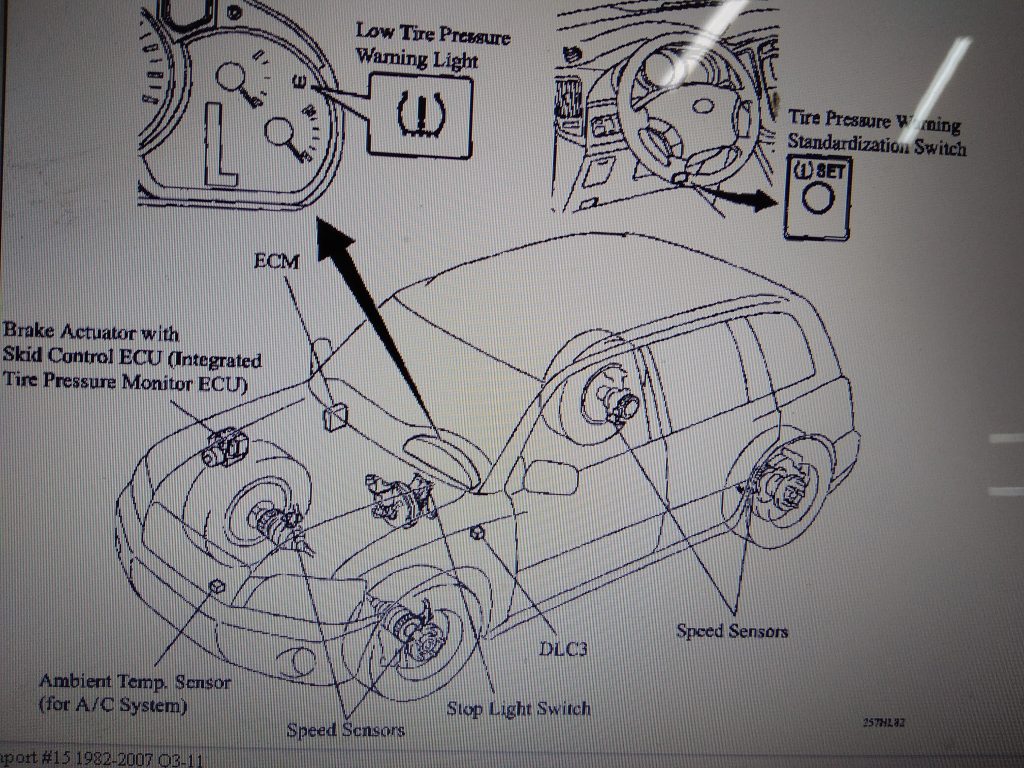Unsure how to reset the tire pressure light on your Ford after inflating the tires? Your tire pressure monitoring system (TPMS) is critical to ensuring your safety, and it’s important to pay attention to its alerts. However, if the light remains on after addressing any issues, then you can follow these steps from Jim Hudson Ford to turn the light off and learn more about the purpose of the TPMS in the process. And remember, if issues persist, you can always bring your vehicle to the service center at Jim Hudson Ford near Chapin.
If the TPMS light ignites on your dashboard, then check the tire pressure in each tire and inflate them as necessary to the recommended PSI. This figure is located inside the driver’s side door or in your owner’s manual. If reinflation doesn’t work, try out these actions:
What does a flashing tire pressure light mean? This may indicate that the tire pressure sensors need replacement batteries, or that there is an issue with one of the sensors in general. To diagnose the actual problem, schedule service near Irmo at Jim Hudson Ford. Our technicians can get things figured out in no time!
To diagnose the actual problem, schedule service near Irmo at Jim Hudson Ford. Our technicians can get things figured out in no time!
Having your TPMS light on isn't a reason to worry. There are many ways to turn it off, and Columbia-area drivers can always contact Jim Hudson Ford for more advice on all service-related questions, including how to check car oil or how to unlock a steering wheel.
Although every reasonable effort has been made to ensure the accuracy of the information contained on this site, absolute accuracy cannot be guaranteed. This site, and all information and materials appearing on it, are presented to the user "as is" without warranty of any kind, either express or implied. All vehicles are subject to prior sale. Price does not include applicable tax, title, and license charges. ‡Vehicles shown at different locations are not currently in our inventory (Not in Stock) but can be made available to you at our location within a reasonable date from the time of your request, not to exceed one week.
Although every reasonable effort has been made to ensure the accuracy of the information contained on this site, absolute accuracy cannot be guaranteed. This site, and all information and materials appearing on it, are presented to the user "as is" without warranty of any kind, either express or implied. All vehicles are subject to prior sale. Price does not include applicable tax, title, and license fees. ‡Vehicles shown at different locations are not currently in our inventory (Not in Stock) but can be made available to you at our location within a reasonable date from the time of your request, not to exceed one week.
Christ Posted on Posted in Tips 6 Comments Tagged with Escape Low Tire Pressure, Escape TPMS Light Reset, Ford Escape, Ford Escape Tire Pressure, Ford Escape TPMS Light
Last Updated on November 20, 2020 by Christ
2005-2019 Ford Escape TPMS Light Low Tire Pressure Reset – Ford is one of the largest automotive companies in the world. Many cars Ford entered into various countries in the world. There are several Ford cars that enter the international market, one of which is the Ford Escape. This car became one of the favorites. The material is carried on the Ford Escape is interesting. Ford Escape is a tough car with a sporty design and fit for use on terrain or road conditions are severe.
Many cars Ford entered into various countries in the world. There are several Ford cars that enter the international market, one of which is the Ford Escape. This car became one of the favorites. The material is carried on the Ford Escape is interesting. Ford Escape is a tough car with a sporty design and fit for use on terrain or road conditions are severe.
In terms of dimensions and weight, the car is quite dashing on the streets. Ford Escape carrying the kind of inline 4 cylinders, ETCS and VVT DOHC 16V with VICS, bore x stroke (mm) 87. 5 x 94. 0, displacement (cc) 2261, fuel system multipoint sequential electronic fuel injection, as well as the ability to tank, can contain 61 L of fuel.
If you receive a low-tire-pressure monitoring system (TPMS) warning light while driving and you want to clear or turning off the warning light on your 2005 2006 2007 2008 2009 2010 2011 2012 2013 2014 2015 2016 2017 2018 2019 Ford Escape, follow these instructions:

Time needed: 17 minutes.
If you replaced a wheel, tire, TPMS sensor, etc. and are now getting a warning light on your car, then the sensor needs to be reset. For that you need to purchase the correct TPMS reset tool and follow these instructions:
Turn the engine switch off and engage the parking brake.
.
If your car has a Smart key button, press once to turn on, then press again to put the vehicle into ACC mode, then press again to turn the vehicle off. Repeat 2 more times, ending in ACC mode.

.
.
If your car has a Smart key button, press once to turn on, then press again to put the vehicle into ACC mode, then press again to turn the vehicle off. Repeat 2 more times, ending in ACC mode.
.
Then press the button to activate the TPMS sensor.
.

.
.
For more details, please watch the following video:
We got this tutorial from Ford specialists. This procedure should be work on the latest generation of Ford Escape (2005 2006 2007 2008 2009 2010 2011 2012 2013 2014 2015 2016 2017 2018 2019 model years). Hopefully, the article of 2005-2019 Ford Escape TPMS Light Low Tire Pressure Resets useful for you. Good Luck!
Useful information
 g. after changing a tire or in case of low tire pressure
g. after changing a tire or in case of low tire pressure Updates 5/31/2021
if a message appears on the front display Check Status. autom. on the center display, you need to calibrate/store the new tire pressure in the tire pressure monitoring system.
For vehicles manufactured from November 2018, the Calibration command can be renamed to Save Pressure in the Vehicle Status folder under the TPMS option.
If, for example, the message Tire pressure low appears on the front display, Check Status. autom. on the center display, or if you have just changed a tire, or you have a vehicle with a new team name, then in order to calibrate the tire monitoring system, follow the instructions below, but instead of the Calibration option, select the Save pressure option. Calibration will be performed automatically later while driving.
After changing tires or after adjusting the tire pressure, the new tire pressure must be calibrated/stored in the tire pressure monitoring system. Similarly, calibration is required if this symbol lights up and/or if the message Check Status appears on the front display. autom. on the center display. When calibrating/storing a new tire pressure, the tire pressure is checked and stored in the system. To do this:
Similarly, calibration is required if this symbol lights up and/or if the message Check Status appears on the front display. autom. on the center display. When calibrating/storing a new tire pressure, the tire pressure is checked and stored in the system. To do this:
Inflate all tires and check the pressure with the ignition off. For more information about tire pressure, see the appropriate tire pressure decal on the door pillar on the driver's side.
Start the engine.
Open the Vehicle Status application.
Press TPMS.
Select Calibration.
Press OK to confirm that all four tires have been checked and adjusted for pressure.
Travel by car.
The new tire pressure is stored when the vehicle is running at speeds above 35 km/h (22 mph).
When enough data has been collected for the system to detect low tire pressure, the messages indicating the progress of saving the data disappear from the center display. The system does not issue additional confirmation that the new tire pressure value has been saved.
Allow the system to complete the data storage within one driving cycle to ensure that the new tire pressure is correctly stored. If the new tire pressure value cannot be saved, the message Failed to save tire pressure data is displayed. Please try again.
Tire pressure information can be found on the sticker on the door pillar by the driver's door.
Remember to save the new tire pressure after every tire change or tire pressure adjustment.
The vehicle must be completely stationary when the tire pressure is restored.
We recommend that you read the owner's manual for your vehicle model for additional information and any important warnings.
XC90 and XC90 Twin Engine from model year 2016
S90, V90 and V90 Cross Country from model year 2017 to model year 2021
XC40, XC60, XC60 Twin Engine, V90 Twin Engine and S90 Twin Engine from model year 2018 to model year 2021
V60, V60 Twin Engine and V60 Cross Country from model year 2019 onwards
S60 and S60 Twin Engine from model year 2020
Model range varies from market to market.
Vehicle model/model year
XC90 and XC90 Twin Engine from model year 2016
S90, V90 and V90 Cross Country from model year 2017 to model year 2021
XC40, XC60, XC60 Twin Engine, V90 Twin Engine and S90 Twin Engine from model year 2018 to model year 2021
V60 , V60 Twin Engine and V60 Cross Country from model year 2019 onwards
S60 and S60 Twin Engine from model year 2020
Model range varies from market to market.
Updates 7/23/2018
A Tire Pressure Monitoring System (TPMS) warning appears as a symbol on the driver display when it registers low pressure in one or more tires of the car.
If the symbol first flashes for approximately one minute and then stays on without flashing, this may indicate that the system is unable to properly detect or warn of low tire pressure.
The tire pressure monitoring system uses sensors mounted on an air nipple in each wheel. The system measures the tire pressure when the vehicle is moving at a speed of approx. 30 km/h(20 mph) or higher. If the pressure is too low, the corresponding indicator symbol and a message appear on the driver display.
| Symbol | Contents |
|---|---|
| The symbol lights up when the tire pressure is low. If a fault occurs in the TPMS system, the symbol first flashes for approx. for one minute and then stays on without blinking. |
Each tire, including the spare wheel*, must be checked every month. The test should be carried out on a cold tire. The tire pressure must match the pressure recommended by the manufacturer and indicated on the tire pressure label or chart. If your vehicle is fitted with tires that are not the manufacturer's recommended size, find out how much pressure these tires need to be maintained.
As an added safety measure, your vehicle is equipped with a Tire Pressure Monitoring System (TPMS) that indicates low pressure in one or more tires. If the low pressure warning symbol comes on, stop as soon as possible, check the tires and inflate to the correct value.
Driving on a tire with low pressure can cause the tire to overheat, resulting in a puncture. Low tire pressure also adversely affects fuel economy and tire life and can affect vehicle behavior and stopping ability. Please be aware that TPMS does not replace normal tire maintenance. The driver alone is responsible for maintaining the correct tire pressure, even if the tire pressure is above the low limit and the indicator symbol is off.
The vehicle also has a TPMS indicator that indicates a system problem. The TPMS indicator is linked to the low tire pressure indicator symbol. When the system detects a fault, the symbol in the driver display flashes for approx. one minute and then stays on without blinking. This procedure is repeated each time the engine is started until the problem is corrected. When the symbol is lit, the system's ability to detect and warn of low tire pressure may be limited.
This procedure is repeated each time the engine is started until the problem is corrected. When the symbol is lit, the system's ability to detect and warn of low tire pressure may be limited.
There are several possible causes for a malfunction in the TPMS system, for example, due to the installation of a spare tire or another tire or wheel that prevents the TPMS from working properly.
Be sure to check the TPMS check digit after changing one or more tires to make sure the TPMS is working properly for the new tire or wheel.
TPMS sensors can be installed in the tire valves, either on factory-built or retrofit wheels. When installing a spare wheel or a wheel without a TPMS sensor, a fault message appears on the driver display a few minutes after the start of the trip.
The system does not replace normal tire care.
The following messages may appear together with the check character:

If the system cannot determine which tire is low, a general warning appears:
